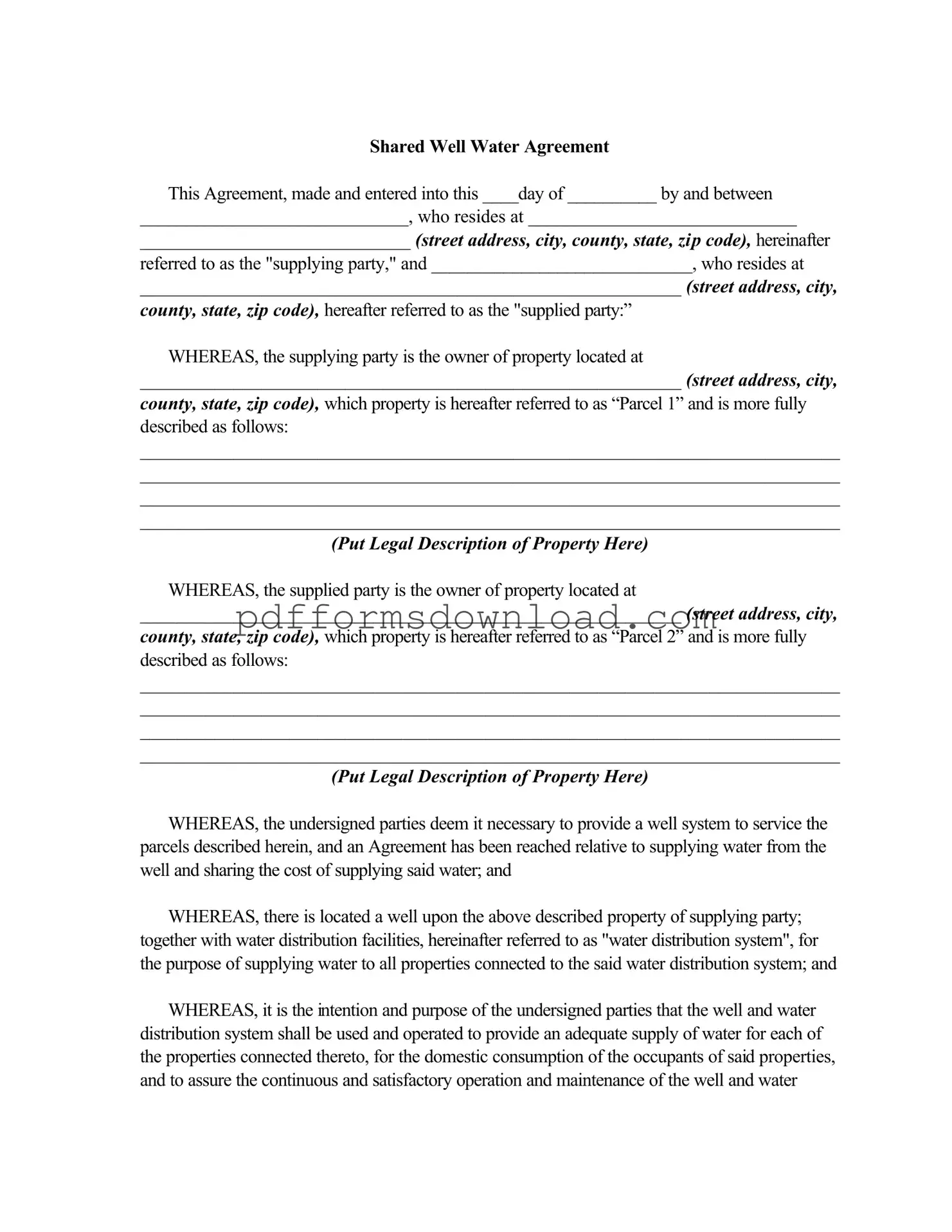What is a Shared Well Agreement?
A Shared Well Agreement is a legal document that outlines the rights and responsibilities of two or more parties who share a well for water supply. This agreement is crucial for ensuring that all parties understand how the well will be used, maintained, and financed. It typically includes details about the well's location, the parties involved, and the terms for sharing water and associated costs. By formalizing these arrangements, the agreement helps prevent disputes and promotes a harmonious relationship among neighbors who rely on the same water source.
Who are the parties involved in a Shared Well Agreement?
The parties involved in a Shared Well Agreement are typically referred to as the "supplying party" and the "supplied party." The supplying party owns the property where the well is located, while the supplied party owns the property that will receive water from the well. Each party's rights and obligations regarding the use of the well and the water distribution system are clearly defined in the agreement. This structure ensures that both parties have a clear understanding of their roles and responsibilities.
What are the costs associated with the Shared Well Agreement?
Costs associated with a Shared Well Agreement can include an annual fee for the use of the well and water distribution system, as well as a proportionate share of ongoing expenses for operation and maintenance. Each party typically pays half of these costs, which may cover electricity for pumping, repairs, and other necessary maintenance. It's important to note that any costs related to the removal or replacement of site improvements on individual parcels, required for system operation, will generally be borne by the owner of the affected parcel. Clarity regarding these financial obligations helps ensure that all parties are on the same page.
What happens if the well becomes contaminated?
If the well becomes contaminated and is no longer suitable for domestic consumption, or if it cannot meet the water needs of the parties involved, the Shared Well Agreement stipulates that the rights and obligations of the parties will cease. In such cases, the agreement allows for the possibility of connecting to an alternative water source. This provision is crucial for ensuring that the parties have a plan in place for maintaining access to safe and adequate water, even if the original well fails to provide it.
How can a party terminate their participation in the Shared Well Agreement?
A party wishing to terminate their participation in the Shared Well Agreement must execute and file a written statement of termination at the appropriate county office where deeds are recorded. Once this process is completed, the terminated party will no longer have the right to use the well and must disconnect their lateral connection from the water system. The costs associated with this disconnection will be the responsibility of the owner of the parcel that is terminating participation. This structured approach to termination ensures that all parties are treated fairly and that the water supply system remains functional for those who continue to participate.
